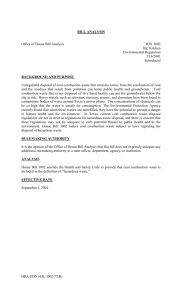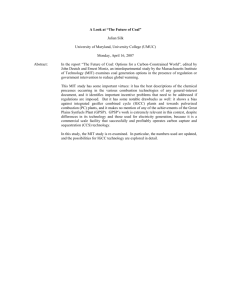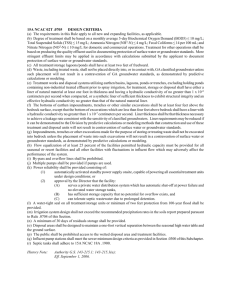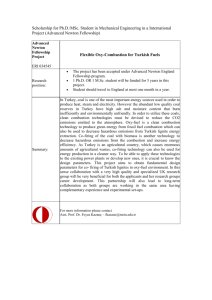G.S. 130A-309.220 Page 1 § 130A-309.220. Design, construction
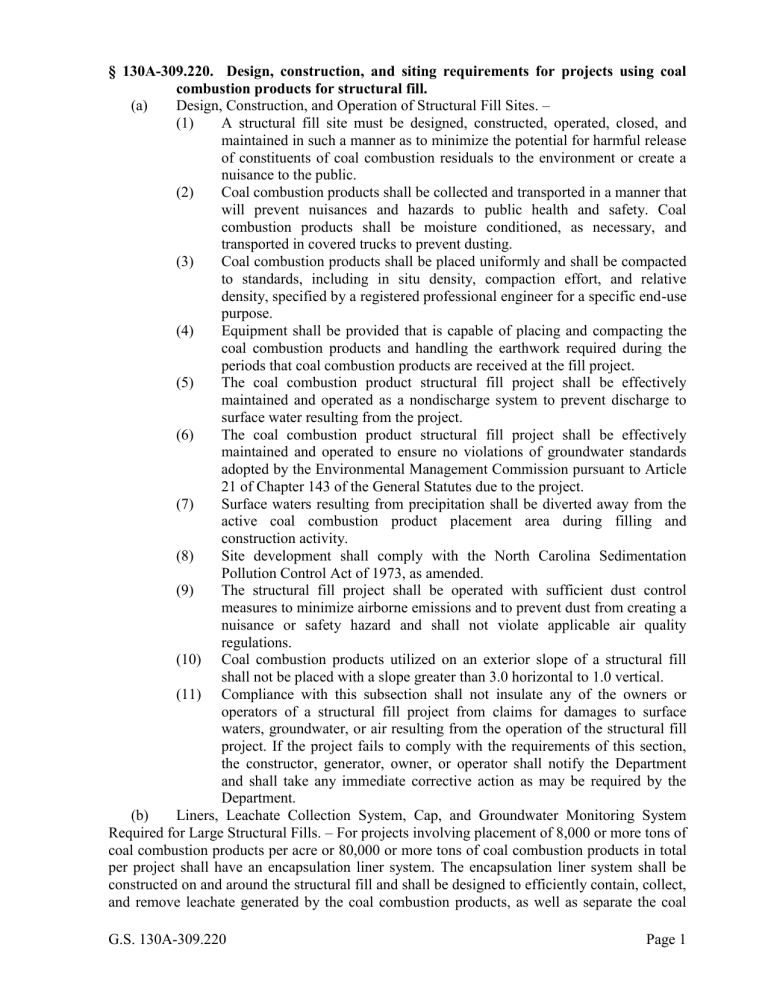
§ 130A-309.220. Design, construction, and siting requirements for projects using coal combustion products for structural fill.
(a) Design, Construction, and Operation of Structural Fill Sites. –
(1) A structural fill site must be designed, constructed, operated, closed, and maintained in such a manner as to minimize the potential for harmful release of constituents of coal combustion residuals to the environment or create a nuisance to the public.
(2) Coal combustion products shall be collected and transported in a manner that will prevent nuisances and hazards to public health and safety. Coal combustion products shall be moisture conditioned, as necessary, and transported in covered trucks to prevent dusting.
(3) Coal combustion products shall be placed uniformly and shall be compacted to standards, including in situ density, compaction effort, and relative density, specified by a registered professional engineer for a specific end-use purpose.
(4) Equipment shall be provided that is capable of placing and compacting the coal combustion products and handling the earthwork required during the periods that coal combustion products are received at the fill project.
(5) The coal combustion product structural fill project shall be effectively maintained and operated as a nondischarge system to prevent discharge to surface water resulting from the project.
(6) The coal combustion product structural fill project shall be effectively maintained and operated to ensure no violations of groundwater standards adopted by the Environmental Management Commission pursuant to Article
21 of Chapter 143 of the General Statutes due to the project.
(7) Surface waters resulting from precipitation shall be diverted away from the active coal combustion product placement area during filling and construction activity.
(8) Site development shall comply with the North Carolina Sedimentation
Pollution Control Act of 1973, as amended.
(9) The structural fill project shall be operated with sufficient dust control measures to minimize airborne emissions and to prevent dust from creating a nuisance or safety hazard and shall not violate applicable air quality regulations.
(10) Coal combustion products utilized on an exterior slope of a structural fill shall not be placed with a slope greater than 3.0 horizontal to 1.0 vertical.
(11) Compliance with this subsection shall not insulate any of the owners or operators of a structural fill project from claims for damages to surface waters, groundwater, or air resulting from the operation of the structural fill project. If the project fails to comply with the requirements of this section, the constructor, generator, owner, or operator shall notify the Department and shall take any immediate corrective action as may be required by the
Department.
(b) Liners, Leachate Collection System, Cap, and Groundwater Monitoring System
Required for Large Structural Fills. – For projects involving placement of 8,000 or more tons of coal combustion products per acre or 80,000 or more tons of coal combustion products in total per project shall have an encapsulation liner system. The encapsulation liner system shall be constructed on and around the structural fill and shall be designed to efficiently contain, collect, and remove leachate generated by the coal combustion products, as well as separate the coal
G.S. 130A-309.220 Page 1
combustion products from any exposure to surrounding environs. At a minimum, the components of the liner system shall consist of the following:
(1) A base liner, which shall consist of one of the following designs: a. A composite liner utilizing a compacted clay liner. This composite liner is one liner that consists of two components: a geomembrane liner installed above and in direct and uniform contact with a compacted clay liner with a minimum thickness of 24 inches (0.61 b. m) and a permeability of no more than 1.0 x 10-=ss 7 =ks centimeters per second.
A composite liner utilizing a geosynthetic clay liner. This composite liner is one liner that consists of three components: a geomembrane liner installed above and in uniform contact with a geosynthetic clay liner overlying a compacted clay liner with a minimum thickness of
18 inches (0.46 m) and a permeability of no more than 1.0 x 10-=ss 5
=ks centimeters per second.
(2) A leachate collection system, which is constructed directly above the base liner and shall be designed to effectively collect and remove leachate from the project.
(3) A cap system that is designed to minimize infiltration and erosion as follows: a. The cap system shall be designed and constructed to (i) have a permeability less than or equal to the permeability of any base liner system or the in situ subsoils underlying the structural fill, or the permeability specified for the final cover in the effective permit, or a permeability no greater than 1 x 10-=ss 5 =ks centimeters per second, whichever is less; (ii) minimize infiltration through the closed structural fill by the use of a low-permeability barrier that contains a b. minimum 18 inches of earthen material; and (iii) minimize erosion of the cap system and protect the low-permeability barrier from root penetration by use of an erosion layer that contains a minimum of six inches of earthen material that is capable of sustaining native plant growth.
The Department may approve an alternative cap system if the owner or operator can adequately demonstrate (i) the alternative cap system will achieve an equivalent or greater reduction in infiltration as the low-permeability barrier specified in sub-subdivision a. of this subdivision and (ii) the erosion layer will provide equivalent or improved protection as the erosion layer specified in sub-subdivision a. of this subdivision.
(4) A groundwater monitoring system, that shall be approved by the Department and, at a minimum, consists of all of the following: a. A sufficient number of wells, installed at appropriate locations and depths, to yield groundwater samples from the uppermost aquifer that represent the quality of groundwater passing the relevant point of b. compliance as approved by the Department. A down-gradient monitoring system shall be installed at the relevant point of compliance so as to ensure detection of groundwater contamination in the uppermost aquifer.
A proposed monitoring plan, which shall be certified by a licensed geologist or professional engineer to be effective in providing early
G.S. 130A-309.220 Page 2
c. detection of any release of hazardous constituents from any point in a structural fill or leachate surface impoundment to the uppermost aquifer, so as to be protective of public health, safety, and welfare; the environment; and natural resources.
A groundwater monitoring program, which shall include consistent sampling and analysis procedures that are designed to ensure monitoring results that provide an accurate representation of d. groundwater quality at the background and down-gradient wells.
Monitoring shall be conducted through construction and the post-closure care period. The sampling procedures and frequency shall be protective of public health, safety, and welfare; the environment; and natural resources.
A detection monitoring program for all Appendix I constituents. For purposes of this subdivision, the term "Appendix I" means Appendix
I to 40 C.F.R. Part 258, "Appendix I Constituents for Detection
Monitoring," including subsequent amendments and editions.
An assessment monitoring program and corrective action plan if one e. or more of the constituents listed in Appendix I is detected in exceedance of a groundwater protection standard.
(c) Siting for Structural Fill Facilities. – Coal combustion products used as a structural fill shall not be placed:
(1) Within 50 feet of any property boundary.
(2) Within 300 horizontal feet of a private dwelling or well.
(3) Within 50 horizontal feet of the top of the bank of a perennial stream or other surface water body.
(4) Within four feet of the seasonal high groundwater table.
(5) Within a 100-year floodplain except as authorized under G.S.
143-215.54A(b). A site located in a floodplain shall not restrict the flow of the 100-year flood, reduce the temporary water storage capacity of the floodplain or result in washout of solid waste so as to pose a hazard to human life, wildlife or land or water resources.
(6) Within 50 horizontal feet of a wetland, unless, after consideration of the chemical and physical impact on the wetland, the United States Army Corps of Engineers issues a permit or waiver for the fill. (2014-122, s. 3(a);
2015-1, s. 3.1(c).)
G.S. 130A-309.220 Page 3
